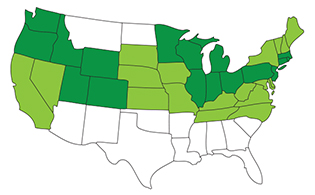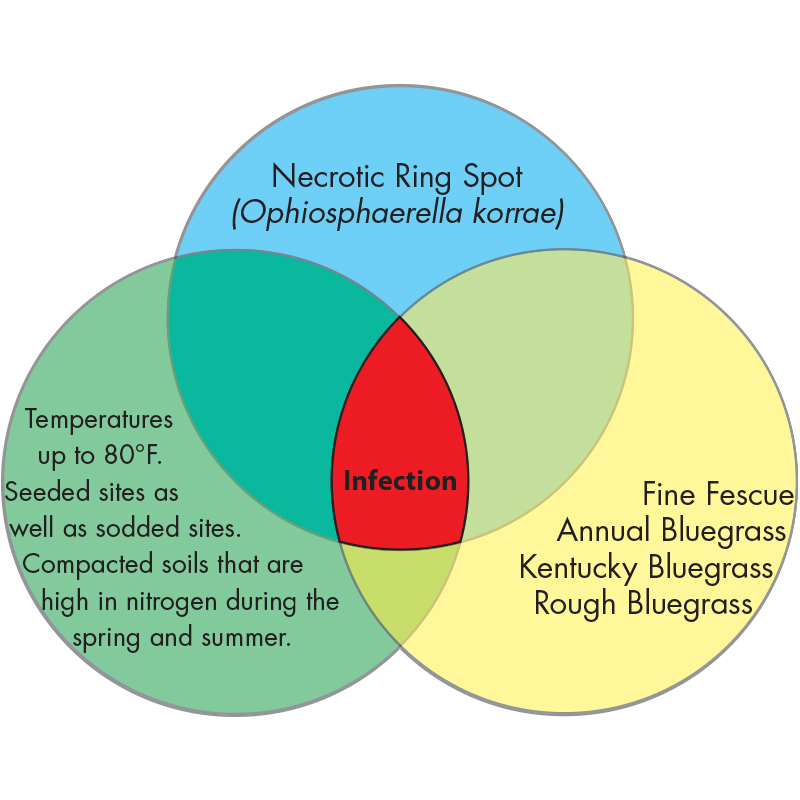
Necrotic Ring Spot
Ophiosphaerella korrae
Necrotic Ring Spot is an extremely serious lawn disease caused by the lawn fungus Ophiosphaerella korrae. Infection is common on high-maintenance lawns around the northern part of the United States and is particularly destructive on Kentucky Bluegrass. Seasonally, damage to your lawn or yard usually occurs in spring and then again in late fall through early winter.
How to Identify Necrotic Ring Spot

Roots of Necrotic Ring Spot
Necrotic Ring Spot can be identified by the yellow to light-green circular patches this lawn disease causes. These patches of thinning grass range from 3 to 15 inches in diameter but can grow up to 3 feet in diameter before eventually turning brown and dying. The roots of the infected area thin and weaken, turning from brown to black. The patches often form a “frog-eye” pattern, with less susceptible types of grass surviving inside the patch's “eye.” Necrotic Ring Spot is often found in areas with a shallow layer of topsoil and a hard, rocky layer of subsoil. Areas damaged by this lawn disease will pull up easily.
Necrotic Ring Circle Life Cycle
A Necrotic Ring Spot infection can occur only if all of the following conditions are present: 1. Pathogen: Ophiosphaerella korrae lawn fungus 2. Host: Various Bluegrass species or Fine Fescue 3. Environment: Compact, high-nitrogen soils with temperatures up to 80°F

Necrotic Ring Circle Control
Since you can't change your environment, the best way to control and effectively treat Necrotic Ring Spot is to create conditions that will foster a healthy lawn. Not only will this make your yard unfavorable for Necrotic Ring Spot growth, but it will also lower your risk of extensive damage should the lawn disease develop—plus you'll have the type of lawn you'll want to live on. For Necrotic Ring Spot control and lawn fungus treatment, TruGreen® recommends the following cultural treatment and control tips: • Raise lawn-mowing height • Reduce soil compaction and thatch with lawn aeration • Use fertilizers with moderate to high amounts of phosphorus and potash • Maintain adequate nitrogen levels using a balanced fertility program • Reduce the amount of shade in your lawn • Lightly irrigate in the mid-afternoon to cool plants and avoid drought stress
Grass Type and Conditions That Contribute to Ring Spot Infection





Facebook
X
Youtube
Copy Link
Email